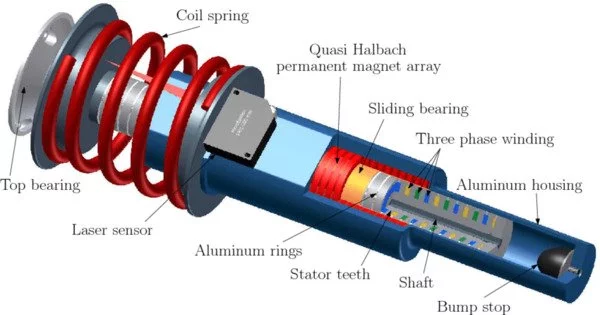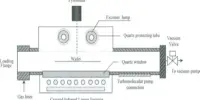Electromagnetic suspension (EMS) is the magnetic levitation of an object achieved by using a feedback loop to constantly change the strength of a magnetic field produced by electromagnets. It is a technology that suspends an object, typically a vehicle, above a track or surface using magnetic fields. In most cases, the levitation effect is caused by permanent magnets, which have no power dissipation and are only used to stabilize the effect. It is commonly used in high-speed trains, transportation systems, and prototypes.
Earnshaw’s Theorem states that a paramagnetically magnetized body cannot be in stable equilibrium in any combination of gravitational and magnetostatic fields. There is an unstable equilibrium condition in these types of fields. Although static fields cannot provide stability, EMS works by constantly varying the current sent to electromagnets in order to change the strength of the magnetic field, allowing for stable levitation. To cancel the instability, an EMS feedback loop that continuously adjusts one or more electromagnets to correct the object’s motion is used.
The fundamental principle of electromagnetic suspension is based on the repulsion and attraction forces produced by magnets. The system can lift and propel an object by using powerful electromagnets and magnetic fields to counteract gravity and eliminate the need for traditional wheels or tracks.
Many systems use magnetic attraction to pull upwards against gravity for these types of systems because it provides some inherent lateral stability, but others use a combination of magnetic attraction and magnetic repulsion to push upwards.
Magnetic levitation technology is important because it reduces energy consumption and friction significantly. It also resists wear and requires little maintenance. The most well-known application of magnetic levitation is in Maglev trains.
The advantages of electromagnetic suspension include:
- Reduced Friction and Improved Efficiency: Without physical contact between the vehicle and the track, there is minimal friction, resulting in increased energy efficiency and reduced wear and tear.
- Higher Speeds: Maglev systems can achieve very high speeds since there is no contact-induced resistance or friction to limit acceleration.
- Quiet and Smooth Operation: Electromagnetic suspension systems are generally quieter and provide a smoother ride compared to traditional wheeled transportation systems.
- Reduced Maintenance: With fewer moving parts and no wheels or tracks to maintain, maglev systems can require less maintenance compared to conventional transportation systems.
Limitation
Despite these benefits, there are a few drawbacks to electromagnetic suspension. These include the high cost of implementation, the requirement for dedicated infrastructure, and compatibility issues with existing transportation networks. Maglev technology, on the other hand, is still being researched and developed for a variety of applications, including high-speed transportation and urban transit systems.
















